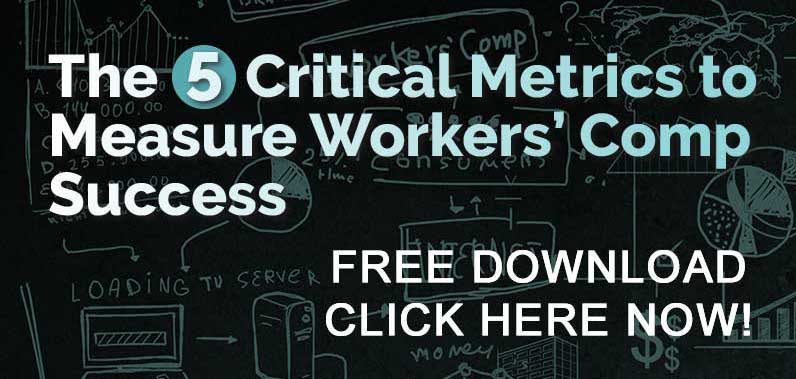By Karen Wolfe, BSN. MA, MBA
President, CEO
MedMetrics, LLC
Workers’ Comp is Different
While rating providers in group health is a long-practiced endeavor, its elements and parameters have not significantly migrated to workers compensation. Efforts to translate group health provider quality measures to workers’ compensation have fallen short of the mark because they omit several factors crucial to workers’ comp. Quality medical performance indicators in workers’ comp encompass medical treatment, outcome, and cost factors similar to those in general health, but they also include non-medical functions. In workers comp, those non-medical elements can be primary drivers of cost, quality, and outcome.
Return to Work: An Indicator of Performance
A major quality goal in workers’ comp is return to full work. Responsibility for achieving that goal rests with the treating physician. Another major quality goal in workers’ comp is return to maximum or full work capacity at the least cost. This article explores the many non-medical functions of treatment that spell quality in workers’ compensation, factors that must be considered in rating doctors’ performance.
Click Link to Access Free PDF Download
For instance, multiple and repeated studies have shown that early return to work is a major indicator of better outcomes in workers comp. (Google search: “Return to Work studies in workers’ compensation.”) The overwhelming take-away from these studies is that the sooner employees return to work after a work-related injury, the sooner they are re-acclimated to the job and the lower the overall cost of the claim. Alternatively, the longer the employee is kept off work, the higher the cost of the claim, with reduced chance of successfully returning to work. Studies show a 1:1 correlation between length of time off work and returning to work — ever. Treating providers are the major driver in returning claimants to work. Therefore, early return to work and reduced overall work loss are key indicators for evaluating medical provider performance.
Cost Measures of Performance
Also important to rating provider performance in workers’ compensation is the issue of cost. Two quantifiable generators of unnecessary costs are frequency and duration of medical treatment. Because PPO, MCO, and MPN networks discount each unit of service delivered, the tendency of some providers is to exploit both frequency and duration of treatment to overcome their discounted fees. Individual provider’s frequency and duration of medical treatment for specific injury types should be measured and compared with the performance of their peers treating similar injuries.
Another comparative quality indicator is direct medical costs. Billed costs are not a true performance indicator by themselves. However, assessing billed costs with paid amounts or percentage reduction of charges recommended by bill review is a more accurate measure.
Prescriptive Practices
Recent research indicates a problem of opioid misuse or abuse in workers comp. Evaluate prescribing practices of individual physicians by monitoring current data, thereby creating an opportunity to intervene. Prescribing practices are a valid indicator in measuring performance.
Outcome
Of critical importance is evaluating providers in terms of outcome like how did things turn out in the claims where they were involved? Is the employee back at work, permanently disabled or somewhere in between? What is the provider’s record? If a provider is associated with a high rate of litigated claims, that should also be considered in the descriptive mix.
Create Algorithms to Measure
Providers can be rated specifically for workers’ comp by creating a set of algorithms measuring these factors using data. An algorithm is simply a defined process, often mathematical, used to solve a problem or reach a conclusion. Algorithms should be used to compare similar types of providers who have treated like injuries in the same jurisdiction during the same time frame. Consistency is achieved because the computerized algorithms apply the same standards to all medical providers who meet a set of conditions.
Analyze Data from Multiple Sources
The data used to evaluate provider performance should be derived from more than one source. Raw billing data or bill review data should be integrated with claim data in order to reach a valid conclusion. Billing and treatment data must be integrated with loss time and outcome information, usually found in different systems, in order to reach legitimate conclusions regarding providers.
Ratings for medical providers must be transparent, fair, and objective. Fairness and accuracy in developing and measuring provider performance is critical. The indicators can be found in the data. The data must be integrated and evaluated using computerized algorithms that measure and monitor provider performance based on a combination of workers’ compensation-specific values.
FREE DOWNLOAD: “5 Critical Metrics To Measure Workers’ Comp Success”
Measuring Provider Performance Is a Good Thing
A post was submitted by Joe Paduda last year, “Like it or not, physician ratings are coming”. The title suggests rating doctors is a bad thing. It is actually a good thing, unless you are a poorly performing provider. Using legitimate workers comp-specific rating systems to provide objective evidence for selection and for weeding out the less effective or even fraudulent providers is positive progress. A poorly performing provider guarantees complexity and cost in the claim. Informed decisions about medical providers based on data will replace personal biases and unknown outcomes. Basing provider selection decisions on objective data is imperative.
Author Karen Wolfe, BSN, MA, MBA, is President/CEO, MedMetrics®, LLC. Karen is founder and president of MedMetrics® LLC, an Internet-based Workers’ Compensation medical analytics company. She applies her medical knowledge to gathering, understanding and applying Workers’ Compensation data to the operational process. MedMetrics imports, integrates, and analyzes its clients’ medical billing and claims level data. MedMetrics uses several tools such as Predictive Intelligence Profiling and Medical Provider Performance Assessment to gather and analyze data. Contact: Phone: 541-390-1680; Karenwolfe@medmetrics.org; www.medmetrics.org.
WORKERS COMP MANAGEMENT MANUAL: www.WCManual.com
MODIFIED DUTY CALCULATOR: www.LowerWC.com/transitional-duty-cost-calculator.php
Do not use this information without independent verification. All state laws vary. You should consult with your insurance broker or agent about workers comp issues.
©2012 Amaxx Risk Solutions, Inc. All rights reserved under International Copyright Law. If you would like permission to reprint this material, contact us at: Info@ReduceYourWorkersComp.com.
FREE DOWNLOAD: “5 Critical Metrics To Measure Workers’ Comp Success”








